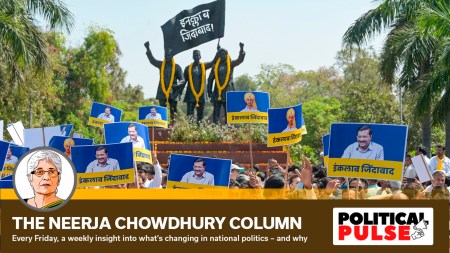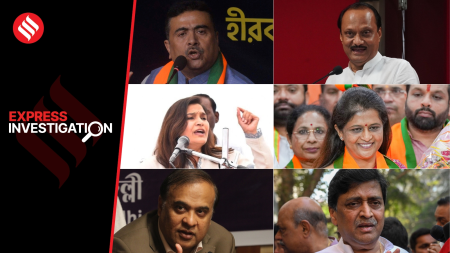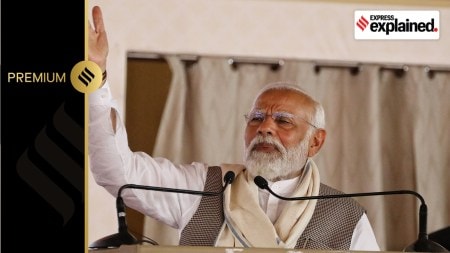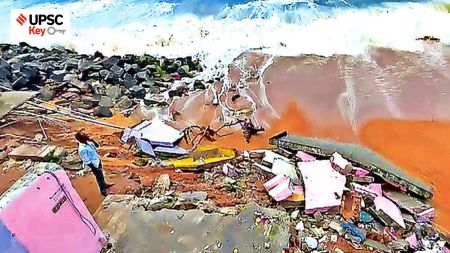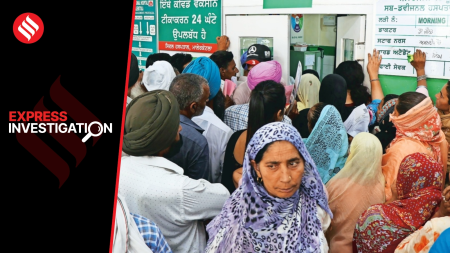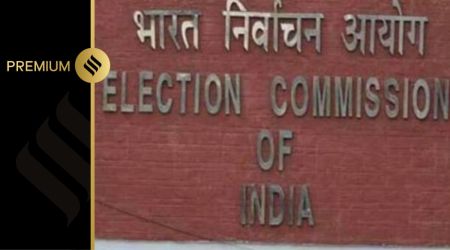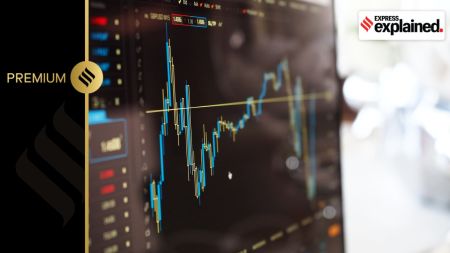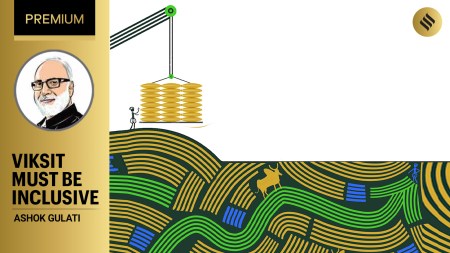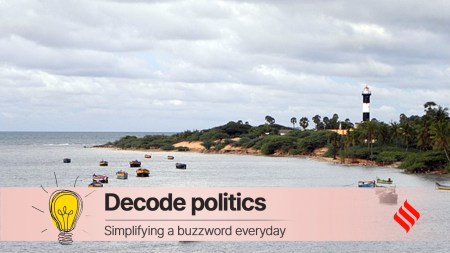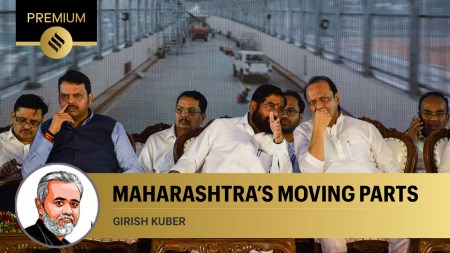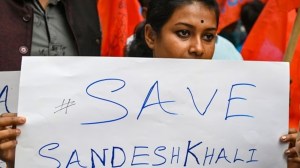- India
- International
90 years of the Reserve Bank of India (RBI): Its history, how it navigated times of crisis
The central bank’s story of the last 90 years has generally been one of stellar achievement. Its relationship with the government has been testy at times, but the bank has been steadfast in defending its turf.
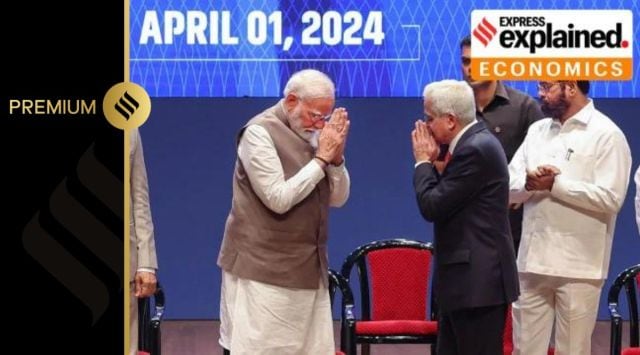 Prime Minister Narendra Modi and RBI Governor Shaktikanta Das at a ceremony marking 90 years of the RBI in Mumbai on Monday. (PTI)
Prime Minister Narendra Modi and RBI Governor Shaktikanta Das at a ceremony marking 90 years of the RBI in Mumbai on Monday. (PTI)The Reserve Bank of India (RBI), which was established on April 1, 1935, is responsible for monetary stability, currency management, inflation targeting, regulating the banking system, and setting interest rates. The central bank’s story of the last 90 years includes ups and downs, but has generally been one of stellar achievement.
Early years of RBI
Legislation to set up the Reserve Bank of India was enacted in March 1934, and the provisions relating to the constitution of the bank, issue of share capital, and establishment of central and local boards became operative from January 1, 1935.
The first Governor of the RBI was the Australian Sir Osborne Arkell Smith, one of the two managing governors of the Imperial Bank of India. Sir C D Deshmukh was the first Indian to become Governor.
Following Partition, it was agreed that the RBI would cease to be the currency authority for Pakistan, and Indian notes would cease to be legal tender in Pakistan.
The RBI’s relationship with the government has been testy at times. But the bank has been steadfast in defending its turf whenever the government has tried to interfere.
The reforms of 1991

A sharp increase in oil prices in August 1990 led to an acute economic crisis, making the balance of payments situation unmanageable, depleting foreign exchange reserves along with massive capital outflows, and pushing India close to default.
The RBI transferred more than 46 tonnes of gold from its reserves to the Bank of England to borrow forex to manage immediate liquidity problems. The rupee was devalued twice, by 9% and 10%, in three days.
Full convertibility of the rupee on trade account was allowed, giving more flexibility to trade. Banking reforms were announced, the setting of interest rates by lenders was deregulated, and new private bank licences issued between 1991 and 1995.
Manmohan & Pranab
In 1982, Prime Minister Indira Gandhi brought Manmohan Singh, then Member Secretary of the Planning Commission, to the RBI to succeed I G Patel as Governor. Singh, who held office till January 14, 1985, prepared the groundwork for strengthening monetary policy actions, and banking reforms got a boost.
Singh acknowledged in the book Strictly Personal: Manmohan and Gursharan, authored by his daughter Daman Singh, that as Governor, he had serious differences with then Finance Minister Pranab Mukherjee. Singh advised the government against granting approval to Bank of Credit and Commerce International (BCCI), a foreign bank promoted a decade earlier by the Pakistani businessman Aga Hasan Abedi, to open branches in India. However, the government wanted the RBI to grant BCCI a licence, and directed it to approve the application.
After the RBI led by Singh opposed it, the government took to the Cabinet a proposal to strip the RBI of its power to license foreign banks. Singh sent his resignation to Mukherjee and the Prime Minister. However, he was persuaded to stay on as Governor.
Singh and Mukherjee reportedly had differences of opinion on the hostile takeover plan of Escorts and DCM by UK-based industrialist Swraj Paul. However, Mukherjee wrote in his book The Turbulent Years, that the decision to move Singh from the RBI to the Planning Commission in 1985 was taken by then Prime Minister Rajiv Gandhi.
Subbarao, Patel vs Govt
D Subbarao, who was Governor between September 5, 2008 and September 4, 2013, mentioned his disagreements with then Finance Minister P Chidambaram. “The Prime Minister (Singh) never asked me (about it). He would ask…whether the Finance Minister was persuaded. I would say yes or no. He would leave it at that. He never pressed a point of view. You can say he was supporting me for he remained above this conflict between the Finance Ministry and the Governor,” Subbarao told The Indian Express in an interview.
Governor Urjit Patel had a running feud with the Finance Ministry when the government asked for more surplus (dividend income) from the RBI. Patel resigned after serving for two years in the post.
2008 crisis and after
India escaped the 2008-09 global financial crisis through a combination of management, structure, and luck. Pre-crisis, the policies of Governor Y V Reddy against capital inflows, especially to the real estate sector, and against rapid foreign bank expansion, were timely. Post-crisis, management was excellent, and appropriately measured.
Under Subbarao, the RBI opted for a liberal accommodative policy to salvage economic growth.
Raghuram Rajan announced plans to internationalise the rupee, float inflation bonds linked to the consumer price index, steps to boost exports and increase inflows, and plans to review the monetary policy process, and gave banks freedom to open branches without having to approach the RBI for licences.
Demonetisation of 2016
On November 8, 2016, the government announced the demonetisation of Rs 500 and Rs 1000 notes of the Mahatma Gandhi Series. It also announced the issuance of new Rs 500 and Rs 2000 notes in exchange for the demonetised notes.
The sudden withdrawal of notes created a liquidity shortage in the country. There were long queues outside banks, and people faced immense hardships across the country. It also roiled the economy — demand fell, businesses faced a crisis, and GDP growth declined close to 1.5 per cent. Many small units reported huge losses even after nine months. The pace of remonetisation was slow.
Managing the situation was one of the biggest challenges faced by RBI. At stake was the credibility of the bank and Governor Patel.
MPC, asset quality review
The Monetary Policy Committee (MPC) which decides on interest rates started during the early phase of Patel’s tenure; he chaired the first meeting of the MPC on October 3 and 4, 2016.
Despite calls from corporate India to go easy on the asset quality review kicked off by Rajan, Patel continued the exercise. The RBI has utilised the Insolvency and Bankruptcy Code (IBC) to address the huge debt pile of some of the biggest defaulters; it has drawn up two lists of 40 corporates with debt of around Rs 4 lakh crore which are in various stages of resolution in National Company Law Tribunals.
Covid-19 pandemic
As demand crashed, there were production cuts and job losses, and growth declined. Shaktikanta Das, the current Governor, and his team opted for an accommodative monetary policy. Repo rate, the main policy rate, was brought down to 4% to kickstart growth. However, the liberal policy led to a spike in inflation, forcing the RBI to raise rates by 250 basis points to 6.5% now.
However, the pandemic aided the RBI in boosting digitisation of payments. The launch of UPI revolutionised payments in the banking system.
More Explained
EXPRESS OPINION
Apr 04: Latest News
- 01
- 02
- 03
- 04
- 05


